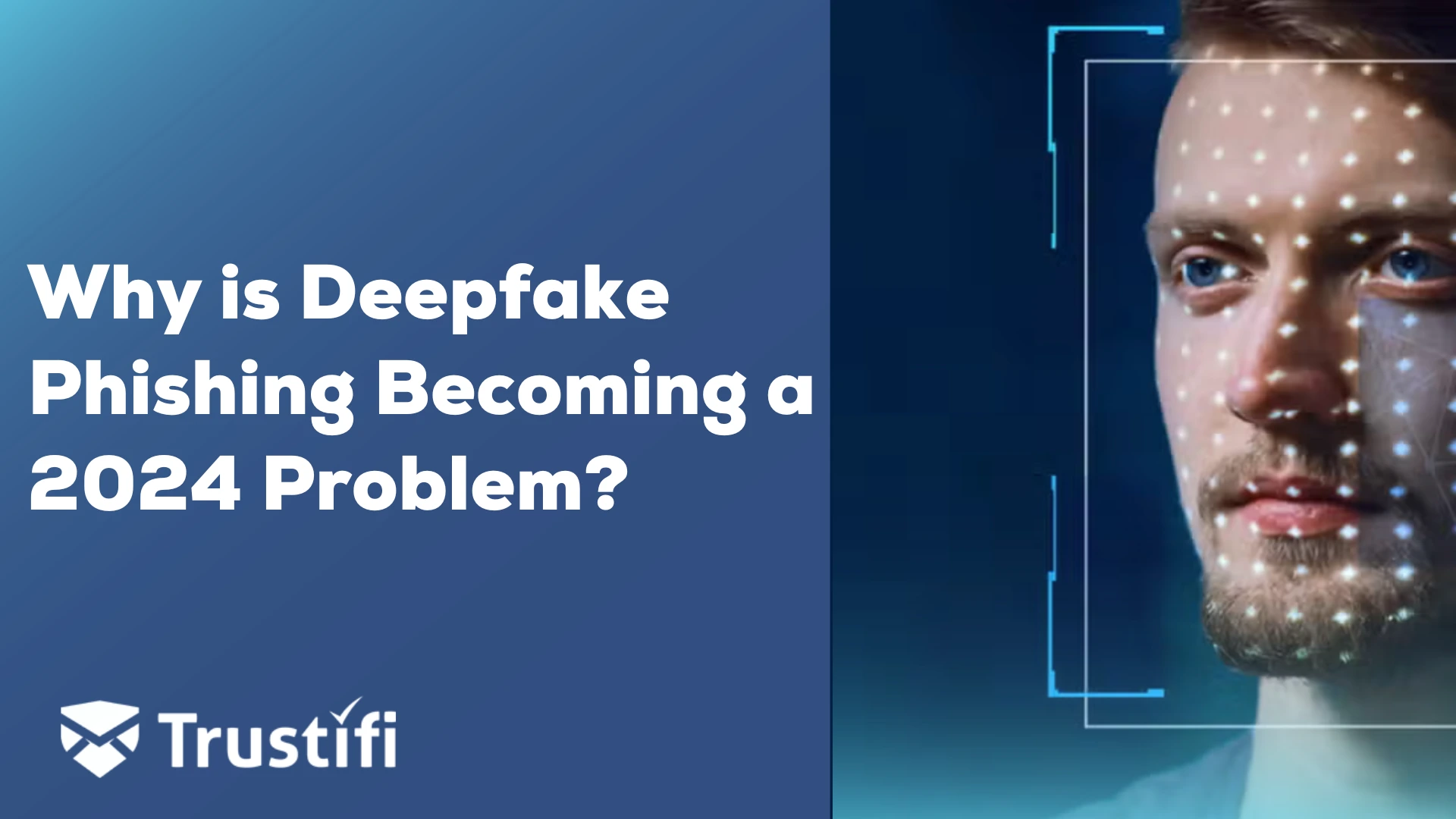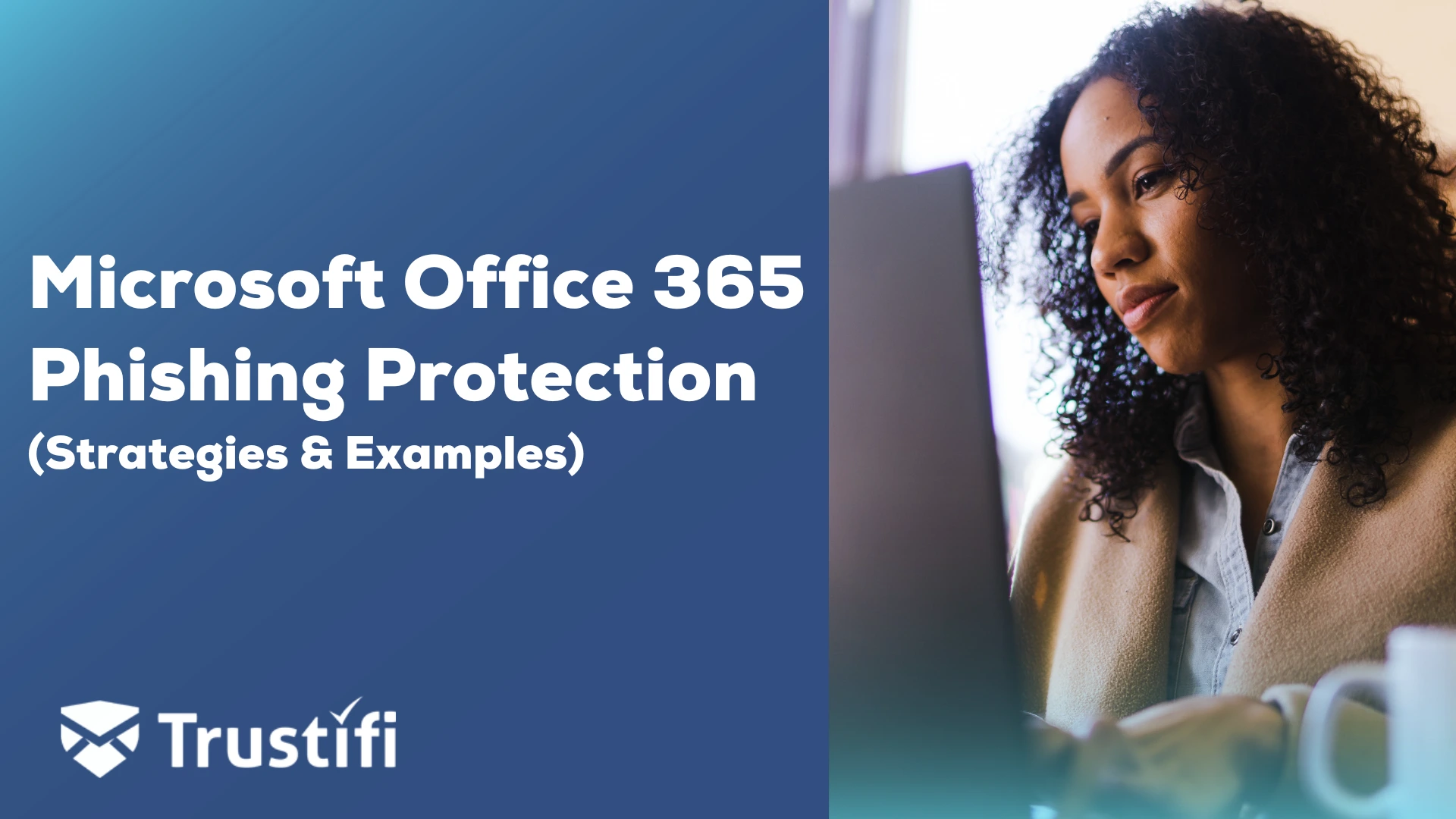As the US enters a critical election year, AI-generated threats, social engineering, and particularly deepfakes are emerging as a top security issue, with no reliable tools yet to combat them.

Trustifi, a global leader in advanced email security powered by AI and ML, showcases its ability to detect and prevent deepfake phishing attacks by thoroughly scanning all the messages.
Definition of Deepfake.
Deepfakes are digitally altered media that mimic someone’s appearance, posing significant risks such as voice cloning, fake videos, and deepfake holograms, which are now cyber threats organizations face.
Generative AI Advanced Technologies Used by Bad Actors.

As deepfake technology progresses, it becomes increasingly challenging to differentiate between authentic and fabricated content.
Organizations have created policies and awareness training to help educate employees about deepfakes and the threat of deepfakes against their organization. The potential misuse of deepfake without consent from the organization or using an image of individuals could bring considerable legal risk and potential harm to the organization.
Deepfake Becoming a Problem for Election 2024.
Political propaganda has been present for many centuries. However, the emergence of artificially generated videos and images has increased the potential for influencing voters and affecting their decisions. ”Experts predict that up to 90% of online content could be artificially generated in the coming years.”

AI-generated media in politics has become a significant concern because of the increasing accessibility of deepfake technology. This raises concerns about the potential spread of false information and the manipulation of candidates’ images to discredit them.
This inability to discern genuine images, videos, or sound clips from artificial ones can significantly affect voters, particularly those undecided on which candidate to support.
It is crucial to use AI technology to mitigate the potential impact of deepfakes on our democratic process.
Increasingly Sophisticated Phishing Tactics Used by Cybercriminals.
Phishers and hackers use traditional phishing like a spear, whaling, and double barrel to fool victims into sharing sensitive information, such as login credentials or financial data, by appearing legitimate. Often, scare tactics are used to bypass the victim’s rational thinking and emotionally manipulate them into responding without questioning the authenticity of the request.

The effectiveness of deepfake phishing lies in its ability to manipulate individuals emotionally.
Because of the relatively new nature of deepfake technology, there are currently no safeguards to prevent its use in spreading misinformation. The recent AI arms race in the tech industry has sped up the release of deepfake generation tools, further exacerbating the problem. Companies and governmental bodies have taken various measures to combat the rise of manipulated content online and mitigate the effects of deepfakes. Tech companies are taking steps to prevent the development of deepfakes. For example, Google has banned deepfake content creation on its platform, and Meta has been removing deepfakes and AI-generated content from its social networks since 2020.
Implications for Security and Trustworthiness of Online Content.
Trusting the content on the Internet is a very slippery slope. Fake news, false reporting by various news outlets, and people publishing zero shreds of authentic content are not new. Misinformation is as standard on the public internet as content barring resemblance of truth.
It is expected that Business Communication Compromise (BEC) attacks will become more sophisticated in 2024, utilizing deepfake technologies. These attacks may involve deceptive communications from colleagues or business partners, leading to unauthorized financial transactions and significant data breaches. The personal and financial information obtained through these methods can be exploited for identity theft.
Hackers creating deepfake content will continue manipulating internet and digital communications, including marketing, technology research, and press releases, to a realm where more people will treat the material as trustworthy.

Who is Responsible for Content Authencity?
The creators should first protect the authenticity of the data and various forms of their content. The responsibility of safeguarding within an organization’s virtual and physical walls falls upon his entity. Ensuring the authenticity of emails and news about the organization also falls up this same entity.
To maintain authenticity, organizations creating product brochures, web pages, and blogs must incorporate several digital rights and content protection capabilities. Watermarking, content encryption, and secure content delivery services become essential for organizations to protect their data, content, and, mostly, their brand from hackers and scammers. Using these tools helps ensure authenticity by ensuring the data and content consumers access untampered content.
How Do You Respond to the Challenges Provoked by Deepfake Phishing?
The digital world is changing rapidly in 2024, with positive and negative developments. New technology, particularly in AI, has brought convenience and increased the risk of scams and cybercrime. Our personal and financial information is more vulnerable than ever as these tech-savvy criminals continuously devise new methods to bypass our security measures. It is crucial to remain vigilant and informed about the tricks they may employ.

Organizations wanting to avoid the increase in deepfake email phishing attacks look to firms like Trustifi to help protect their email and data. Trustifi’s advanced email security platform powered by AI and ML offers optimal protection against deepfake phishing and other next-generation zero-day attacks. Powered by one of the most mature AI-filtering email cloud solutions in the cybersecurity industry, Trustifi’s ability to scan every inbound message and look for clues with their advanced engines combined with outbound data protection makes their solution ideal for all businesses regardless of their market or geo-location.
Trustifi has several additional integrated adaptive controls to help ensure the authenticity of email messages.
Email Encryption: If your organization regularly uses email to send and receive personal information or sensitive data, you must have a secure email encryption solution. Trustifi provides AES-256-bit encryption, giving end-to-end protection for email messages and ensuring all email data is protected from malicious third parties.
Multi-factor Authentication: By enabling Multi-Factor Authentication, you ensure emails are kept fully secure and accessed by their intended recipients. Senders can encrypt emails with just a simple click of a button. Recipients can securely and easily access encrypted emails in their inboxes after verifying their identity with an additional authentication factor in creating new accounts or logging into third-party systems. This strategy makes encryption much more accessible, making users far more likely to use it.
Why Trustifi?
Trustifi is a cyber security firm featuring solutions delivered on software as a service platform. Trustifi leads the email management market with the easiest-to-use and deploys email security products, providing both inbound and outbound email security from a single vendor.

As a global cybersecurity provider of both inbound and outbound email protection, Trustifi currently supports customers from countries including the USA, Canada, Brazil, the Dominican Republic, the UK, the Netherlands, India, the UAE, China, and Japan, Cyprus, the Philippines, and more. The company has also developed “One-Click Compliance” capabilities that cater to world security regulations, including PDPO for Hong Kong, POPI for South Africa, GDPR for Europe, and LGPD for Brazil.
Request A Demo: Trustifi: Email Security Solutions
Whether you’re looking for an extra layer of protection in your existing email environment or a complete email account suite solution, the expertise and simplicity Trustifi offers will exceed your expectations. Let’s discuss a customized email security plan that fits your needs perfectly.



